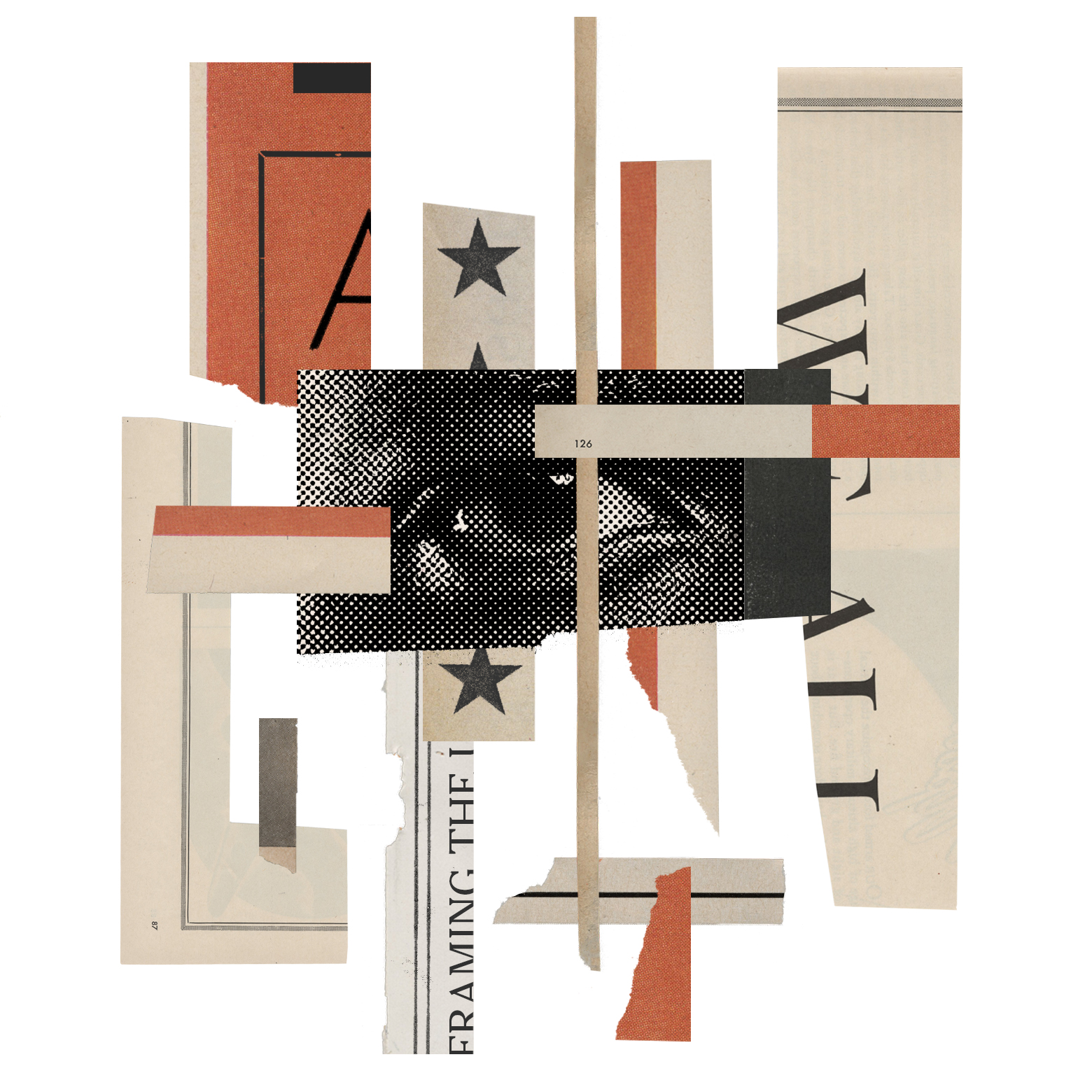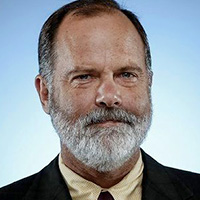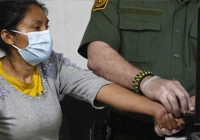At this odd juncture of American life, when many state and local governments are moving to stifle conversation around race in classrooms and beyond, UCLA’s law school is charting the opposite course, pioneering the use of Critical Race Theory to examine American race relations.
Critical race studies came to occupy a central place at the School of Law beginning in the 1990s. Since its inception, the program has touched hundreds of students, shaped countless conversations and debates and become what one professor, Devon Carbado, who joined UCLA’s law faculty as critical race studies was becoming established, calls “a transformative force.”
Jennifer Mnookin, dean of UCLA Law, agrees. Programs that teach critical thinking on race are “facile targets” in today’s politics, she said, and though it is tempting to laugh off some of the criticism, it must be taken seriously “because really substantial efforts are underway to impact the way people teach and talk about race.”
California stands as an outlier against that trend. Indeed, though California’s governance struggles are complex and sometimes disheartening, UCLA’s focus on how to study and combat bigotry has placed the university and California more broadly at the vanguard of scholarship seeking to reckon with America’s plague of racial intolerance.
A Confused Debate
Since 2020, Critical Race Theory has been the object of intense, if often misguided, national debate. Proponents, who include some of the UCLA School of Law’s most esteemed faculty members, as well as a generation of their students, see it as a useful tool for understanding American legal history. Its critics, many of whom have not bothered to examine Critical Race Theory in any detail, view it as a subversive method for turning young people against their country.
Criticism of the theory – really, a method of legal and historical analysis – was spearheaded by then-President Donald Trump, who issued an executive order on Sept. 22, 2020, just a few months before losing reelection, that did not name Critical Race Theory but attempted to challenge its underpinnings and sound an alarm about its impact. The order purported to “combat offensive and anti-American race and sex stereotyping and scapegoating.” It warned that some beliefs about racial and sexual identity were a “malign ideology … now migrating from the fringes of American society and [threatening] to infect core institutions of our country.”
A group of conservative lawmakers and their media allies followed the president’s lead. Nowhere was this more evident or more predictable than on Fox News. Although Critical Race Theory had been around and taught for decades, Fox News gave it little notice until the president issued his order. According to Media Matters, the network mentioned “Critical Race Theory” three times in June 2020; a year later, in June of 2021, the phrase appeared on its broadcasts 901 times. The trend has continued, and the theory is now regular feature in Fox’s coverage of national affairs, ranking with allegations of election fraud and defenses of the defeated president.
To combat the perceived – some would say, manufactured – threat posed by Critical Race Theory, Trump specifically barred teaching such ideas in the United States military. He also directed federal contractors not to engage in workplace training that relied on certain notions of racial identity or oppression.
Meanwhile, since the federal government does not educate many young people, Trump’s order had little immediate effect on American education, but it stoked a heated debate over the place of Critical Race Theory in American schools.
More than a year after Trump’s order, the Brookings Institution found that eight states had enacted laws banning classroom discussion of topics related to racial bias and oppression (with the exception of Idaho’s law, the states that have acted do not specify Critical Race Theory by name, but rather attempt to describe and limit it). Another 15 states were considering similar bills, and a host of state and local school boards have acted. By the middle of 2021, an investigation by NBC found some 165 jurisdictions that were considering measures to restrict teaching Critical Race Theory or ideas akin to it. And the efforts have carried into 2022.
Typical of those is Virginia Governor Glenn Youngkin, who campaigned in 2021 on the promise of listening to the parents of school-age children and who, on taking office in 2022, issued an executive order barring the teaching of Critical Race Theory, which he called “inherently divisive.” It was “Executive Order Number One” of the new administration.
What Is It?
Critical Race Theory is a way of looking at history, most often legal history. It urges students to examine ways in which the law creates and defends racial hierarchies. That is not so different from programs that employ Freudian or feminist or economic lenses; in each case, a theoretical device becomes a prism through which to see events and institutions from a new perspective. Critical Race Theory, of course, centralizes that conversation around race, and this seems to make a significant difference, at least among those nervous about discussing a topic that touches some of America’s most objectionable history.
Critical Race Theory does not have a single creator, but the late Professor Derrick Bell is most often credited with its origination. Bell, a pioneering lawyer and civil rights advocate, spent his early years litigating to desegregate American schools, a project of the 1940s and 1950s that culminated in one of the most highly regarded decisions in the history of the United States Supreme Court. In 1954, the court unanimously voted to strike down school segregation in Brown v. Board of Education.
That landmark ruling, however, gave way to a long period of state and local resistance, which undermined the practical effects of the court’s constitutional proclamation. As he grew older, Bell’s early optimism about desegregation gave way to a more critical point of view: Racism, he argued, was not a curable defect of American democracy, but rather a fundamental condition.
In 1973, Bell published “Race, Racism, and American Law,” which put forward the argument that progress in American race relations was achieved in those rare moments when the interests of the White majority and those of Black people and other minorities converged. In that formulation, racial progress was not so much a matter of progress per se as it was of alignment.
Take school desegregation. Viewed through the prism of convergence, the Supreme Court’s ruling in Brown v. Board of Education is less an example of the justices coming to some flash of enlightenment — all nine justices who signed the opinion were White men — than it was of White and Black interests converging at that moment in the early 1950s. This period was marked, among other things, by the growing tensions of the Cold War, in which racism played a significant role. The United States was competing with the Soviet Union for the allegiance of much of the world, particularly the developing world. Jim Crow laws that protected racist practices gave the Soviet Union a powerful point of argument on behalf of the superiority of Communism to American capitalist democracy. For a moment, Black interest in desegregated schools converged with White interests in Cold War advantage, and the result was Brown.
Under the theory of convergence, said LaToya Baldwin Clark, a professor of law who came to UCLA in 2018 in part because of its embrace of Critical Race Theory, “we only get true racial progress when the interests of the dominant group come together with the interests of the oppressed.”
That analysis also helps explain what happened in the era after Brown and what is known as “Brown II,” the implementation ruling in which the court commanded that desegregation proceed with “all deliberate speed.” As scholars have noted, the result was much deliberation and little speed, with states intentionally impeding integration efforts and forcing dramatic confrontations with federal authorities. The consequence was glacial progress and even backsliding. In many parts of the United States, schools today are as segregated as they were before Brown was decided.
This caused Bell to doubt the potential of the law and highlights important aspects of Critical Race Theory. Among other things, the theory challenges the assumption that — as UCLA Law Professor Cheryl I. Harris, an important scholar in the development of the concept, says — “American law was self-correcting when it came to questions of racial discrimination.” It is not always self-correcting, as she and others have demonstrated, and the law’s progress on issues of racial justice is sometimes the result of outside forces.
Crossing Disciplines
Critical Race Theory is certainly not the only way to understand certain aspects of history. Even its application to school integration is subject to differing points of view. Does convergence, for instance, mean that the nine justices of the Brown court were acting with Cold War concerns foremost in their minds? If so, there is no written record to support that.
But do events in the aftermath of Brown support the idea that the breakdown of convergence led to the stalling of progress? Certainly, the answer is yes.
In other words, the convergence of ideas that allowed for Brown – White interest in Cold War advantage merging with Black interest in desegregation – diverged again after the court had ruled and the battle moved to implementation. By then, Baldwin Clark said, “Brown had already served its purpose” by signaling to the world the U.S.’s commitment to desegregation; no such convergence existed around implementation, so the process stalled.
The specifics of such debates underscore the larger point of Critical Race Theory as a method of studying and teaching history and the law. Critical Race Theory opens new ways of approaching topics and understanding forces in American history and beyond; it helps explain how the Brown decision could be both so celebrated and so willfully ignored. As such, the approach surfaces important and provocative questions, even if it does not answer all of them.
Moreover, the method at work is not confined to one course or one subject. It shines light across multiple disciplines and ideas, in much the same way that law students study law and economics or law and philosophy.
“I teach first-year Property,” Baldwin Clark said. “I teach my class from a critical race perspective.”
Two Decades of Critical Race Studies at UCLA
UCLA developed its critical race studies program in response to a “crisis,” said Professor Laura Gómez, one of the program’s founders. “The crisis resulted from the fact that in 1996, California voters passed what was known as Proposition 209.”
Proposition 209 abolished affirmative action in California. It affected programs throughout the state, but its most pronounced implications were in education, where it prohibited state colleges and universities from using race to help guide hiring and admissions decisions. The debate over the measure and the statewide vote helped focus attention nationally on the question of race in education.
At UCLA, Prop 209 led law school professors to confer about subjects they were teaching independently and brought them together into a single program — the Critical Race Studies program. Students who joined the program did so to “study that which we know, which is the relationship between race, racism and the law,” said Kimberlé Crenshaw, another co-founder of the program, who holds the Promise Institute Chair in Human Rights at UCLA Law.
Although critical race studies are solidly established at UCLA law school, the national debate continues, with critics seizing on the topic to pursue larger objectives.
The call to ban Critical Race Theory from public schools is less motivated by reality — no one is really proposing to teach Critical Race Theory to elementary school students — than by a broader discomfort with discussions of race and history at all levels. When the Wisconsin legislature or a North Carolina school board considers barring teachers from discussing “social justice” or “equity and inclusion,” they are warning teachers to avoid the topic of race altogether.
The effect of those efforts, then, is to deflect or discourage frank discussions about such varied topics as the Japanese internment or Jim Crow laws or the genocide of native people. If critics can succeed in shutting down Critical Race Theory, then they will have gone a long way to quelling those conversations as well.
This has implications for educators and students even in classrooms where Critical Race Theory is never directly employed. Imagine a teacher whose students want to talk about the murder of George Floyd or the significance of monuments to Confederate generals – lively topics both in and out of classrooms. The effect of outlawing critical race studies, said Baldwin Clark, is “to stifle any conversation about racism. And if you can’t talk about these things, that’s a problem.”
At UCLA, such criticism has not silenced educators. To the contrary, Mnookin said that she has sought additional funding to expand the law school’s Critical Race Studies program and is seeking contributions to expand it still further.
“We are proud of our program,” she said. “Rightly proud.”
Illustrations by Mike McQuade.
Here’s a link and URL for more information about the Critical Race Studies program at UCLA: https://www.law.ucla.edu/academics/centers/critical-race-studies

























